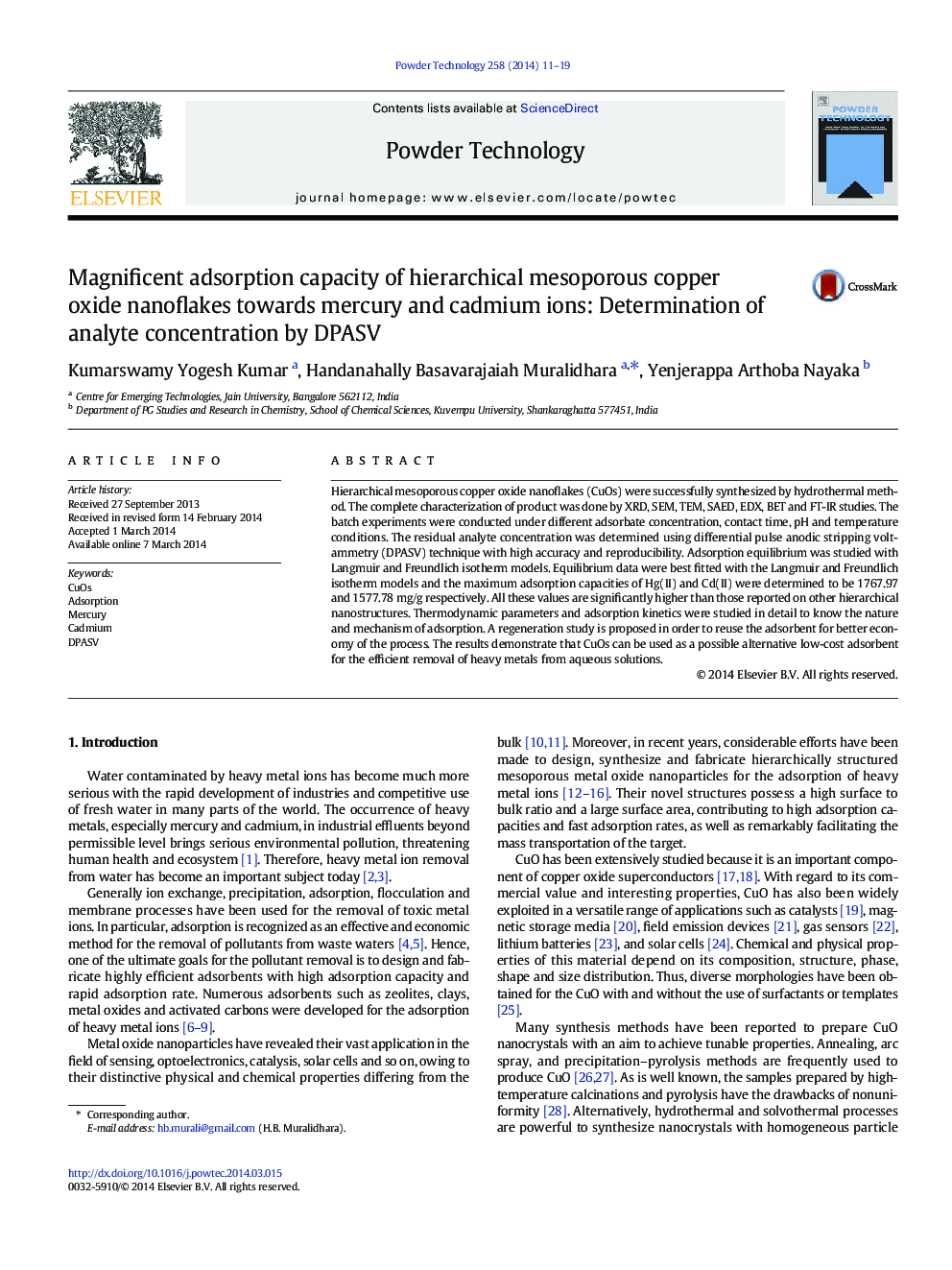| کد مقاله | کد نشریه | سال انتشار | مقاله انگلیسی | نسخه تمام متن |
|---|---|---|---|---|
| 236062 | 465658 | 2014 | 9 صفحه PDF | دانلود رایگان |

• CuOs were successfully synthesized by hydrothermal method.
• CuOs indicated high selectivity and efficiency to remove Hg(II) and Cd(II) ions.
• The residual concentration of Hg(II) and Cd(II) were determined by using DPASV.
• CuOs were regenerated and reused for adsorption process.
Hierarchical mesoporous copper oxide nanoflakes (CuOs) were successfully synthesized by hydrothermal method. The complete characterization of product was done by XRD, SEM, TEM, SAED, EDX, BET and FT-IR studies. The batch experiments were conducted under different adsorbate concentration, contact time, pH and temperature conditions. The residual analyte concentration was determined using differential pulse anodic stripping voltammetry (DPASV) technique with high accuracy and reproducibility. Adsorption equilibrium was studied with Langmuir and Freundlich isotherm models. Equilibrium data were best fitted with the Langmuir and Freundlich isotherm models and the maximum adsorption capacities of Hg(II) and Cd(II) were determined to be 1767.97 and 1577.78 mg/g respectively. All these values are significantly higher than those reported on other hierarchical nanostructures. Thermodynamic parameters and adsorption kinetics were studied in detail to know the nature and mechanism of adsorption. A regeneration study is proposed in order to reuse the adsorbent for better economy of the process. The results demonstrate that CuOs can be used as a possible alternative low-cost adsorbent for the efficient removal of heavy metals from aqueous solutions.
In the present study, CuOs were prepared by hydrothermal method. They were in hierarchical mesoporous structure and had excellent adsorption behavior with Hg(II) and Cd(II). Residual concentration was determined by using DPASV. The maximum removal efficiency of CuOs was proven to be an excellent alternative adsorbent for waste water treatment.Figure optionsDownload as PowerPoint slide
Journal: Powder Technology - Volume 258, May 2014, Pages 11–19